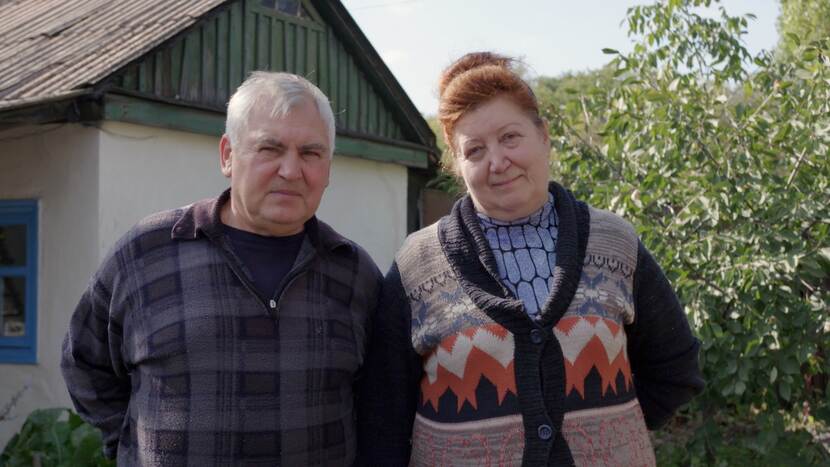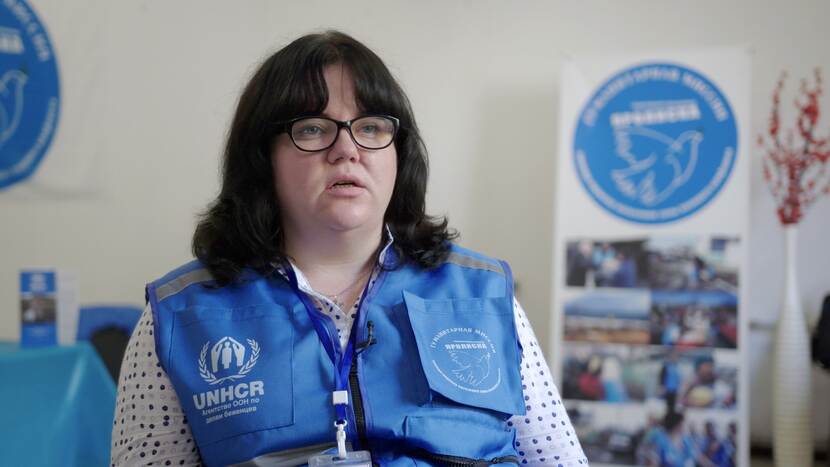Living along the front line in Eastern Ukraine
The eastern Ukranian town of Zolote is divided by the front line that runs through the whole of Luhansk region. Nina Pavlova, 62, is among those inhabitants who, although internally displaced and grappling with their experiences, have not left.

A large part of Zolote is controlled by the state army, another part by pro-Russian separatists. The town, once numbering 5000 inhabitants but now 3500, has been shelled heavily. As a result, Nina’s flat has become uninhabitable, forcing her to move. In her new house, at a safer place, she could do nothing but cry and was unable to sleep.
Separated
Therefore, she reached out to a psychologist. Now, after about ten sessions, she can again sleep normally and have skype conversations with her daughter in Russia without weeping all the time. Together with her husband, who has had a disability since before the war but got shell-shocked in 2015, she has managed to resume her life. She has even found the strength to help her sister and niece, who as yet stay in a ruined house near the front line. Still, she has been separated from her grandchildren for years on end now. Watch her story below.

Need of psychological aid
Psychologist Maryna Klubkova works for UNHCR. She provides psychosocial support for people living along the front line – or ‘contact line,’ as it is called – and crossing checkpoints. She has been a witness of their distress since 2014. ‘Everybody here is in need of psychological aid to some extent.’
Eastern Ukraine is one of those regions in the world where mental health and psychosocial support (MHPSS) are badly needed. MHPSS must be part of the basic assistance provided in crisis situations, so that people are able to care for themselves and for others. The Minister for Foreign Trade and Development Cooperation, Sigrid Kaag, is hosting an international conference in Amsterdam on 7 and 8 October to help achieve this goal.